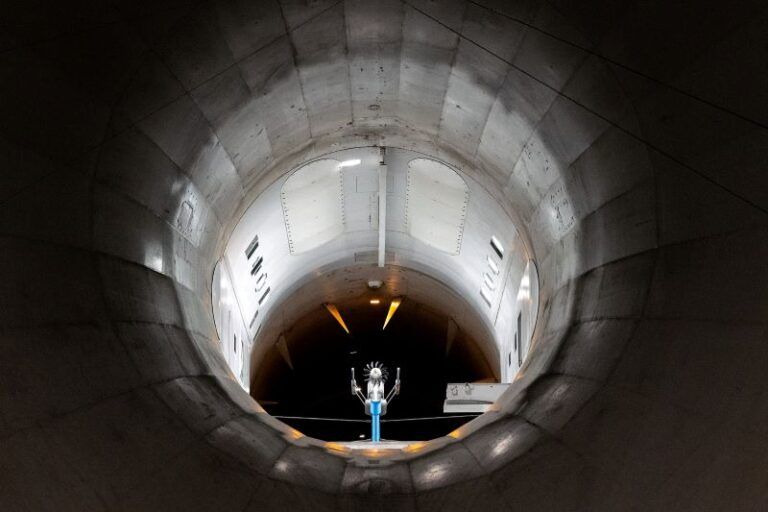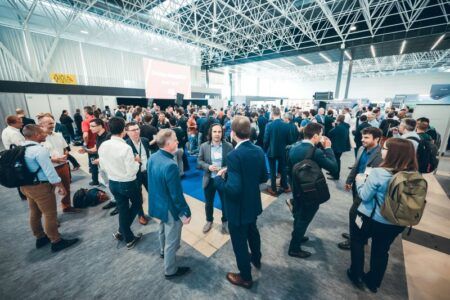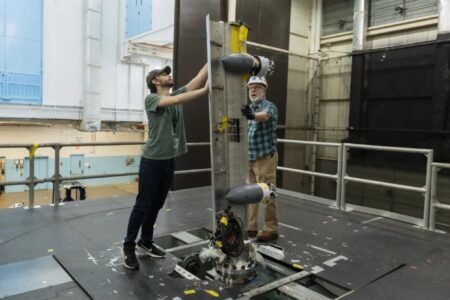The testing of a new type of propulsion system that claims to be greener has seen major changes to one of the French national aerospace research agency ONERA’s wind tunnels as part of a wider modernization program for the government wind tunnel facility in Modane, France near the Italian border.
The French aerospace and defense group Safran is developing a new open fan propulsion system within its aircraft engines division as part of the CFM International joint venture with the USA’s GE Aerospace.
With a rudimentary resemblance to the longstanding tried and tested turboprop engine, the open fan does not have propellers. Instead, it has counter-rotating ornately complex blades – the fan – which are driven by a turbine. The fuel efficiency of the open fan engine is expected to deliver up to a 20% reduction in consumption and CO2 compared to existing turbofans.
An earlier incarnation of what is now being called open fan was the open rotor engine. This was investigated for many years by different companies and aerospace agencies. It has been studied as part of a conventional on-wing installation or as part of an aircraft’s empennage.
Project timeline
The latest incarnation is called the Revolutionary Innovation for Sustainable Engines (RISE) technology demonstration program and was launched in 2021 by CFM International. As part of the RISE program, a suite of engine technologies is being developed to enable more efficiency and ensure compatibility with the expected future fuels of hydrogen and Sustainable Aviation Fuel (SAF). The RISE Open Fan engine could be powering airliners by the 2030s.
“This series of wind tunnel tests is a major milestone in our research and technology roadmap, which aims to develop the technological building blocks for the next breed of commercial jet engines,” says Safran Aircraft Engines’ vice president engineering, research and technology, Pierre Cottenceau. “With the RISE program, Safran Aircraft Engines is contributing our long-standing expertise to the development of the fan module to demonstrate the benefits of an unshrouded engine architecture on the ground and in flight by mid-decade.”
For the RISE work, the first Open Fan configuration tests in an ONERA wind tunnel began in 2023. The program covers several test campaigns for Safran, with more campaigns planned over the next three years until 2028.
ONERA’s Fauga Mauzac centre in southeastern France will also be involved. The Open Fan in the wind tunnel is Safran’s 1:5 scale demonstrator ECOENGInE. “The partnership we’ve set up with Safran reflects our shared drive to support the development of cleaner, greener aircraft,” says Marie-José Martinez, wind tunnels director at ONERA.
“We are a key player in efforts to reduce the environmental footprint of aviation.”
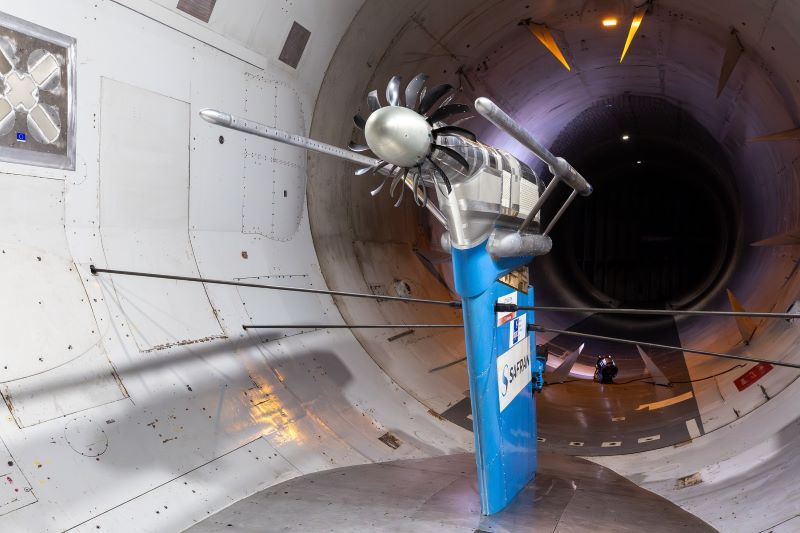
(Photo: Rodolphe Alary / Safran)
Transonic tunnel
The ECOENGInE is being tested in Onera’s S1MA tunnel, which is 8m (26ft) across and the world’s largest continuous flow transonic wind tunnel. Safran has done more than 200 hours of testing during the campaign. This is being followed by simulation tests with the engine mounted on a demonstrator plane wing section.
The ECOENGInE tests are supported by the French Civil Aviation Authority (DGAC) as part of the COnseil pour la Recherche Aéronautique Civile (CORAC) 2 plan. The first program for CORAC, whose French name translates as Council for Civil Aeronautical Research, began in 2008.
The aim under CORAC 2 is to demonstrate the aerodynamic and acoustic performance of the fan module by simulating real-world airspeeds in a wind tunnel and to validate the design of the fan blades. The large size of SM1A means it is possible to test engines in isolation or mounted on a wing structure.
“The S1MA wind tunnel is essential for this type of test, because it enables the testing of large engine simulators in an environment that allows the entire flight envelope of airliners to be achieved, up to cruising speed,” says Martinez, who before joining ONERA was director of the French government’s General Directorate of Armaments’ propellant test centre.
The hundreds of hours of tests planned at Modane then at Fauga Mauzac aim to mature the aerodynamic and acoustic design. Martinez explains that several Open Fan blade configurations will be tested, to evaluate their aerodynamic and acoustic performances. Both in an isolated configuration, the engine on its own, and with it integrated onto a wing.
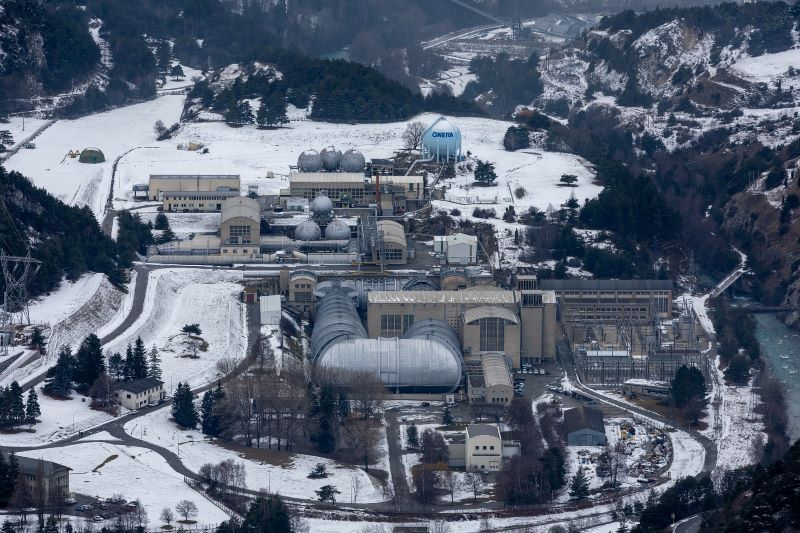
southeastern France
The effects of the aerodynamic interactions caused by the integration of the engine under the wing, “are very important to determine and very complex to model by calculation,” Martinez says. “This is why our tests are carried out in partnership with Safran and Airbus.”
A change made to the S1MA wind tunnel is the bench for the scale-model demonstrator, which has been modified to provide power to the engine. Further changes ONERA has planned for its Modane facility, under its ongoing wider modernization plan, include the tunnels’ acoustic capabilities.
The S1MA and ONERA’s Fauga-Mauzac F1 tunnel can accommodate the likes of Open Fan for testing and while they are being improved, the size and characteristics of these tunnels will not change. “We are improving the acoustic capabilities of the large S1MA wind tunnel so it can carry out sound signature measurements without degrading aerodynamic quality or test productivity,” Martinez explains.
The DGAC support flows from the French government’s “France 2030” plan. Within this ONERA launched its modernization project for its measurement capabilities, which it calls the Greener project, specifically for the engineering and measurement of open fans. While this will prepare the wind tunnels for the future RISE Open Fan trials, the project is also the first step in a program to mature new experimental measurement techniques and model technologies.
Greener is focused on the large S1MA and F1 industrial wind tunnels. The Modane and Fauga-Mauzac engineering teams are to “develop and integrate particularly innovative measurement techniques,” according to Martinez.
Greener by design
To achieve this, Greener’s work will focus on two areas. One, on increasing optical measurement capabilities which will make it possible to better characterize the interactions between the engine’s fans and the airframe. Two, the development of measurement capabilities that make it possible to qualify and optimize in the same campaign those aerodynamic and acoustic performances of future engines and the new aircraft integrating them.
“The challenge is to be ready for future industrial test campaigns for unducted fan engines and a new short, medium-haul aircraft program to better reduce the associated risks,” says Martinez.
The ONERA tunnels will have acoustic boxes installed to better control the noise environment, reducing the background noise caused by the operation of the wind tunnel itself. The noise characteristics of the tunnel will also be evaluated with the help of a reference noise source.
Further changes to the bench the Open Fan demonstrator is mounted on are also planned to cater for future acoustic performance tests, as well as the normal aerodynamic work of the centre. Measurement systems are also planned to see improvements with what Martinez calls “several other innovations”. One is the use of more acoustic booms for near-field measurements.
The industry is hearing more about digital twins and digital certification, where the power of computing is such that sub-systems and sections and even entire aircraft are simulated. Martinez recognizes the importance of digital tools: “Simulation is an essential part of the design of Open Fan,” she says. However, the complexity of the aerodynamic and acoustic phenomena involved, the interactions between the fan and the cell, mean in her view, that “the simulation must be enriched with wind tunnel data which will make it possible to validate the design codes.”
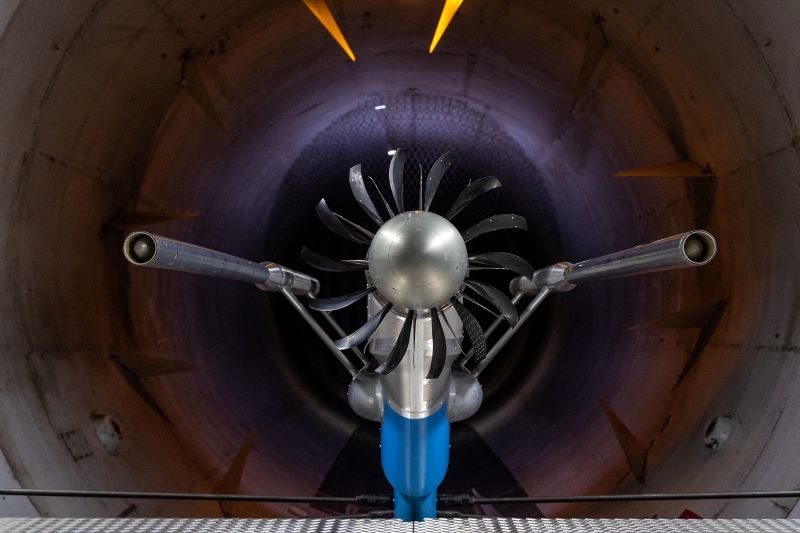
Airfoils and more
Beyond Open Fan, ONERA’s large wind tunnels are also being prepared to be used in future by industry to support the development of a more diverse range of aeronautic, aerospace and defence innovations such as laminar airfoils. The HLFC-Win (Hybrid Laminar Flow Control-Win) project for example is supported by EU funding under its Clean Sky 2 program.
“Among the other subjects explored in our large wind tunnels, we can cite work on laminar airfoils,” says Martinez, who also refers to DGAC-supported work on new aircraft configurations where the engine is “partially buried” in the fuselage. This will be the subject of a wind tunnel demonstration by 2027.
Safran is investing in its own 8m-wide wind tunnel chamber at its Villaroche centre in France. Expected to be operational next year, the chamber will be used to carry out development and certification tests for RISE.
The Villaroche centre has already conducted ingestion tests on Open Fan blades. As well as RISE, Safran is coordinating the EU Clean Aviation Open Fan for Environmental Low Impact of Aviation (OFELIA) project. This involves 26 European partners, including ONERA. Safran is also working on several other technological building blocks in conjunction with the Open Fan architecture, such as hybrid propulsion. The airliners of the future could look a lot like those of old with propellers, but with Open Fan engines along the wing.


